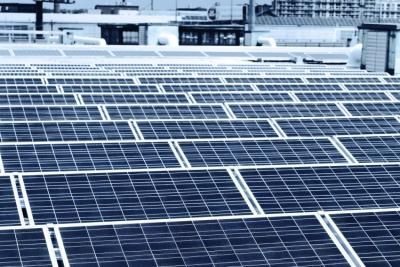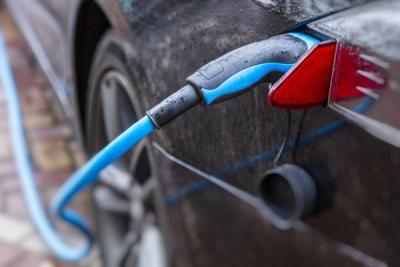Getting more out of our grid capacity
- Andrew Burgess
- Publication type:
- Blog
- Publication date:
- Industry sector:
- Transmission Network,
- Distribution Network,
- Generation and Wholesale Market,
- Supply and Retail Market
Britain faces its biggest revolution in energy for over a century – the shift to renewable energy, new technology and electric vehicles.
More electricity is being generated from intermittent wind and solar power instead of big dirty fossil fuel power stations which are always on.
The significant increase in the amount of solar generation in Britain demonstrates how quickly our energy system is changing. The Government’s latest statistics show that there was almost 13GW of solar capacity by spring 2018, compared to under 1GW in 2011. There have been big changes in how we want to use electricity as well as how it is generated. There are already 160,000 electric vehicles on British roads, and millions more will join them in the coming years. There is also big potential for heat pumps and other forms of electricity storage in particular to be used more widely.
Making better use of existing grid capacity
As the energy landscape transforms, our energy grids have got to adapt with it. In the past if new generators wanted connections or demand grew, the solution was simply to build more infrastructure. We will still need some new grid capacity in future, but we must make better use of what we have got already. If we don’t then the costs to consumers of managing these changes will go up and there will continue to be delays in getting renewables and other technologies such as storage connected to the grids.
Last year Ofgem and Government published the smart systems and flexibility plan which estimated that the savings resulting from the plan could be between £17bn-£40bn to 2050. Of this, £10bn-£13bn of the prospective savings are from reduced need for network reinforcement by making better use of existing network capacity. Last week we have published proposals for reforms to the way electricity grid access is allocated and charged for, that will help to capture those benefits.
More choice on connection arrangements
In some parts of Britain grid capacity to accommodate new generation is scarce. But new generation or storage projects can provide value by offsetting network congestion caused by increasing demand. If we want the network to be used more efficiently the ‘price signal’ for generators wanting to use the grid in a congested area may need to increase, whereas a credit could be paid to those in areas where they are relieving congestion.
We also want to see a more dynamic range of connection options available from network companies for generators and other users. This is so that they can choose the type of network access that most suits their needs.
Most of the lower voltage distribution network operators (DNOs) already offer flexible connections where renewable generators or other users agree not to use the grid at peak times when the network is under strain. Often, the most recent generator to be connected under these arrangements is normally the first to be told to stop generating at peak times. Users could get more control if we allow them to bid to not be the first on the list of those that must reduce their output. They would bid against other users that are more willing to be flexible by taking their place. We are also looking at ways to allow generators or other users to exchange capacity they hold, with others who are looking for grid access. This will make for better use of capacity and could help speed up connections.
Flexible charging for electric vehicles
Other types of connection options could be made available. For example, connections could be offered that allow access just for off-peak periods, or certain times of the year. This could suit some renewable developers who produce power during the daytime or have different seasonal output.
We must also get the right incentives in place so that the costs of meeting demand to charge electric vehicles (EVs) are kept down for consumers. Last week, we published research which shows that if owners use ‘flexible’ charging—where they only top up outside peak demand times on the grid—at least 60% more EVs could be charged up compared with ‘inflexible’ charging where they are only charged at peak times.
By giving the right incentives to charge flexibly we can encourage EV owners to make the most of spare generation and network capacity outside of peak periods, while cutting their bills to top up. For example, this could take advantage of surplus solar energy in the middle of the day, or surplus wind energy overnight.
The batteries of EVs also represent an important potential new pool of storage capacity to draw from and help manage the system. According to research, EVs are not used for 96% of the time. Innovative tariffs could help users make extra money while their car is in the drive by selling stored electricity back to the grid.
Ofgem’s proposals are designed to get the most out of Britain’s existing grid capacity and help deliver a smarter, more flexible energy system which is fit for the future. We want to have the reforms in place between 2022 and 2023 and I am calling on the industry to work with us on this. We must seize this opportunity to make changes which will help the take up of EVs and help more renewable generation and other technologies get connected to the grid more quickly, and at the lowest cost for consumers.
Respond to our consultation
You can respond to our consultation on forward-looking charging arrangements and reforming access to electricity networks here.
Subscribe
You can stay up to date with our blogs and other Ofgem news by signing up to our Alerts & Briefings.
This blog first appeared as an article on www.utilityweek.co.uk on 23 July 2018.

